Lesson 10: All about Pool Cues
Buying a new pool cue can be a daunting task if you don't know exactly what you are looking for. There are literally thousands of options from dozens of pool cue brands to choose from, so it's best to start by narrowing down the choices.
In this video/article, Florian "Venom" Kohler explains the differences between house cues, standard two-piece cues, and top performance cues by breaking down the impact they can have on your game. Whether you just like to knock balls around for fun, are dedicated to improving, or you're an expert that can't have your equipment holding you back, there's a pool cue with the perfect balance of quality and price to match your commitment to the wonderful ways of billiards.
Watch now or read below to learn how to buy the right pool cue for you and your game. Enjoy!
Begin Transcript: Hi my name is Florian Kohler, also known as Venom. As you know, material is very important in the game of pool, so today is going to be all about pool cues. So you're going to find about a million different cues in a pool store, a little bit of everything for every budget. But in my opinion there's really just three categories that are worth it to talk about. So you got professional cues, intermediate level cues, and a house cue.
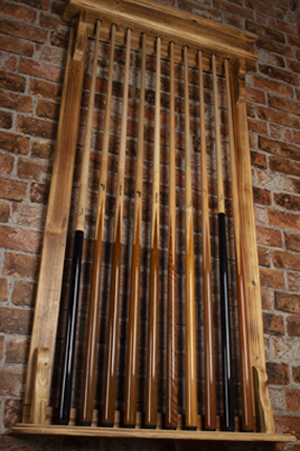
House Cues and One-Piece Cues
House Cues are about the lowest price point you can get. They’re usually a one piece cue. It's got nothing special, just hard wood. No fancy inlays or anything like that, but it has got a cue, a shaft, a tip, and a ferrule. So usually they're about as good as they get. This is what you're going to get in the pool hall. This one is $29.95. So 30 bucks. It's a really cheap cue, and you know most of the time you're not going to buy that for your house, but you're going to find that in a pool hall.
Affordable Two-Piece Pool Cues
Now, if you want to get a little bit more serious about your game, you can go ahead and try to go to a store and pick an intermediate level cue. So this here is about $60, $56 here. It's got nothing fancy but it's just a normal thing, there are no inlays, just paint. It is a two-piece cue, so you can actually bring it in a case. It's got a metal joint, looks pretty solid. The shaft is probably just hard maple, which is fine. You know it's great.
There's a nice ferrule here, a nice tip; actually a multi-layer tip, too. These kind of cues, they're great if you don't put too much English, that means not too much left too much right. Or low and high if you play a little bit center ball. Take good care of it and it should last you pretty good, too.
You know it's something to start with. That's what I started with. And it plays good enough if you don't play with extreme spins.
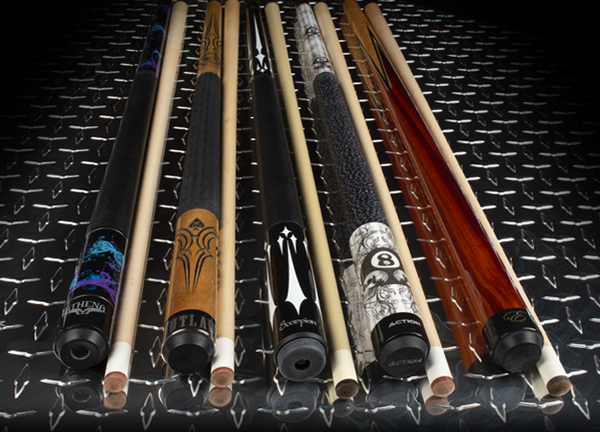
Professional and Low Deflection Pool Cues
Now if you really want to put your game to the next level, if you feel like it, you're going to go and buy a professional cue. So I have here mine, it’s a Mezz Ace Cue. It’s got a low deflection, hybrid pro two shaft. I mean it's a $1500 cue. So it's not exactly the same, it's a big gap from $60 to $1500.
But really you can find the same kind of cues. And what I really want you to look at is the "low deflection" thing. So for a good professional cue, the best and most important part is the shaft. You just want a shaft that's good. The butt is alright, you know, I mean it's just something you're going to like. It's something that's going to look pretty, or the materials are going to be fancy or you're going to find some really crazy inlays. You can find a professional cue from like $300 to $100,000. That doesn't mean that the $100,000 cue is going to make you play better but it's going to probably look great.
So again you know make sure the shaft says "low deflection".

The Importance of Low Deflection Shafts
Now before we go any further I want to explain what low deflection is, because it's a very standard term now, and some people don't really know exactly what it is.
So what happens is, I have three different cues here. I have my own cue here that's a really good low deflection.
I have an intermediate level cue right here.
And I have this cue here, and I had a special shaft made with very high deflection. So you can visualize better what's happening.
Deflection only occurs when you hit left or right English. That means if it's center-ball, it doesn't matter if cue is low deflection or not, it won't change the way the cue ball reacts.
Now I'm going to go and hit extreme left on the cue ball, and I'm going to aim right for the center diamond here, okay. So you can see it. Going to go right here. Extreme Left, aim for the diamond.
Boom.
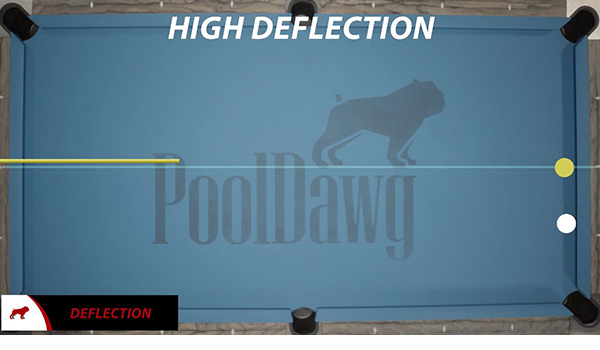
You see where the cue ball went? It went somewhere there. That means that even aiming straight to the Diamond, my cue pushed through the ball, and because it pushed on the left side of ball; it pushed the ball to the right, right there. So like I said, this is a really high deflection cue. So this was made for you to visualize better and you can see, it moved the ball like this [deflected to the right]. That means, if basically, you're trying to aim for a ball that's right here. To touch that ball you would have to aim right there, which is crazy.
So this is an intermediate level cue.
It is going to have quite some deflection, too; and I'm going to do the same thing. I'm going to aim right here. A lot of left spin.
See what it does. It's not too bad. See.
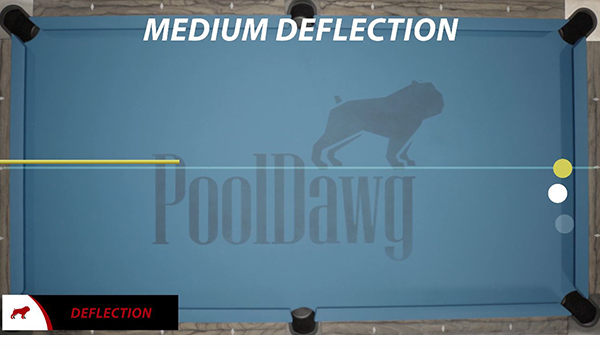
It went somewhere right here. I mean if I had a ball right here, I'd still probably miss it, but not as much. There, so you can see really like this one hit pretty much on the diamond with a lot of spin.
So basically low deflection means, even when you put spin left or right you can hit a more natural point of contact on your cue ball. That means you know, if your natural point of contact is here [left or right]. With a low deflection it will be almost the same, meanwhile with a really high deflection cue...it would be here or here, it could be very different depending what spin you put.
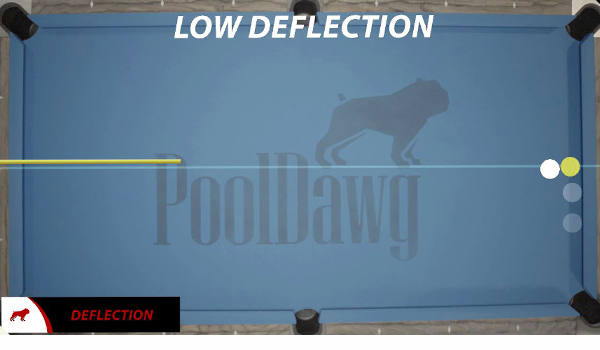
And that's why low deflection cues are so important, because once you start playing really good, and you put a lot of English on your shots, you can actually start to make balls a lot easier and a lot better with low deflection than we had with high deflection.
Pool Cues are an Investment
Now remember, a cue, especially you know an expensive one like that, it's an investment. It's not just the one thing you buy and you use and you're done with it. Now this new year is almost 10 years old already and you can see it's in prime shape, I mean it's got nothing wrong with it. It's an investment.
It'll last you for decades. A good cue is going to be part of your life, and if you play a lot, you know, it's going to be basically the extension of your arm.
So kind of like you want to have a nice car if you're a car racer. Well this is kind of the same thing.
When you think about it, for something that lasts 10-15 years, this is not too bad.
So again, you know it depends on if your investment depends who you and your wallet and how deep you want to go. Make sure you pick the right cue for yourself and if you go to [choose] a professional cue, make sure it says low deflection, and it's a good deflection cue.
Thank you guys for watching. I hope you enjoyed all this advice. Remember, if you want to see more tutorials, go click here on my channel, you'll find a few more. And to order all of your pool and billiard supplies, just go check out Pooldawg.com
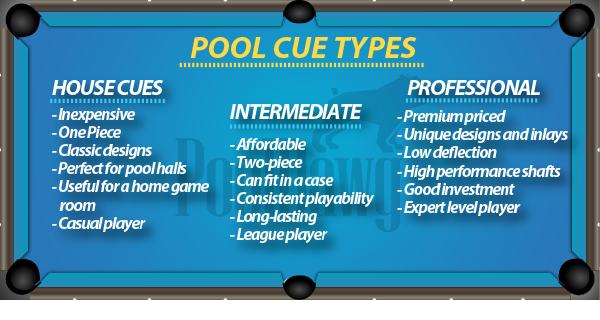
- RELATED ARTICLES
- Ten Pool Cue Buying Mistakes – By Samm Diep
- Should I Use a Low Deflection (Squirt) Shaft? – By Tom Simpson
- Pool Cue Buying Guide – By PoolDawg Staff